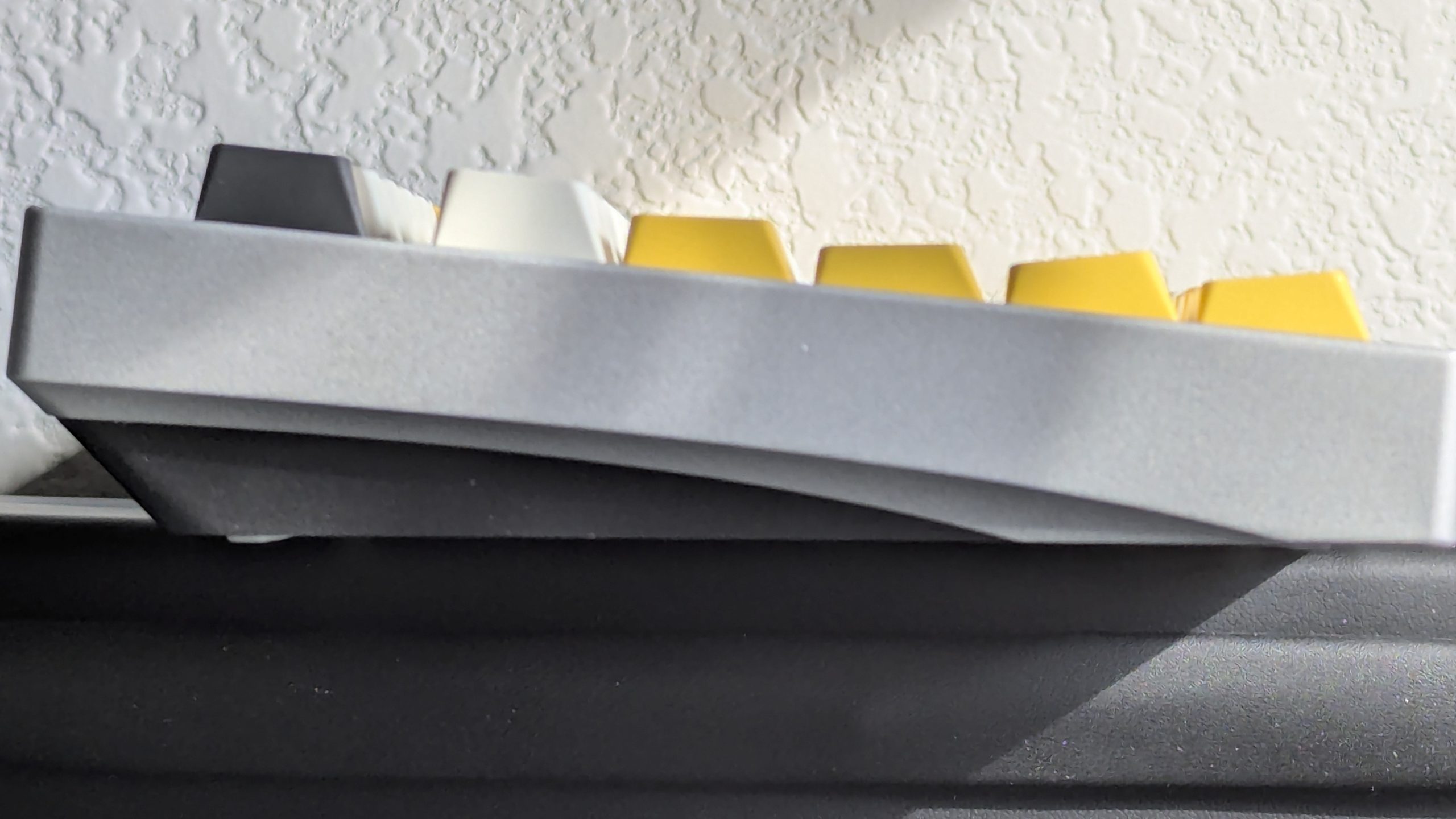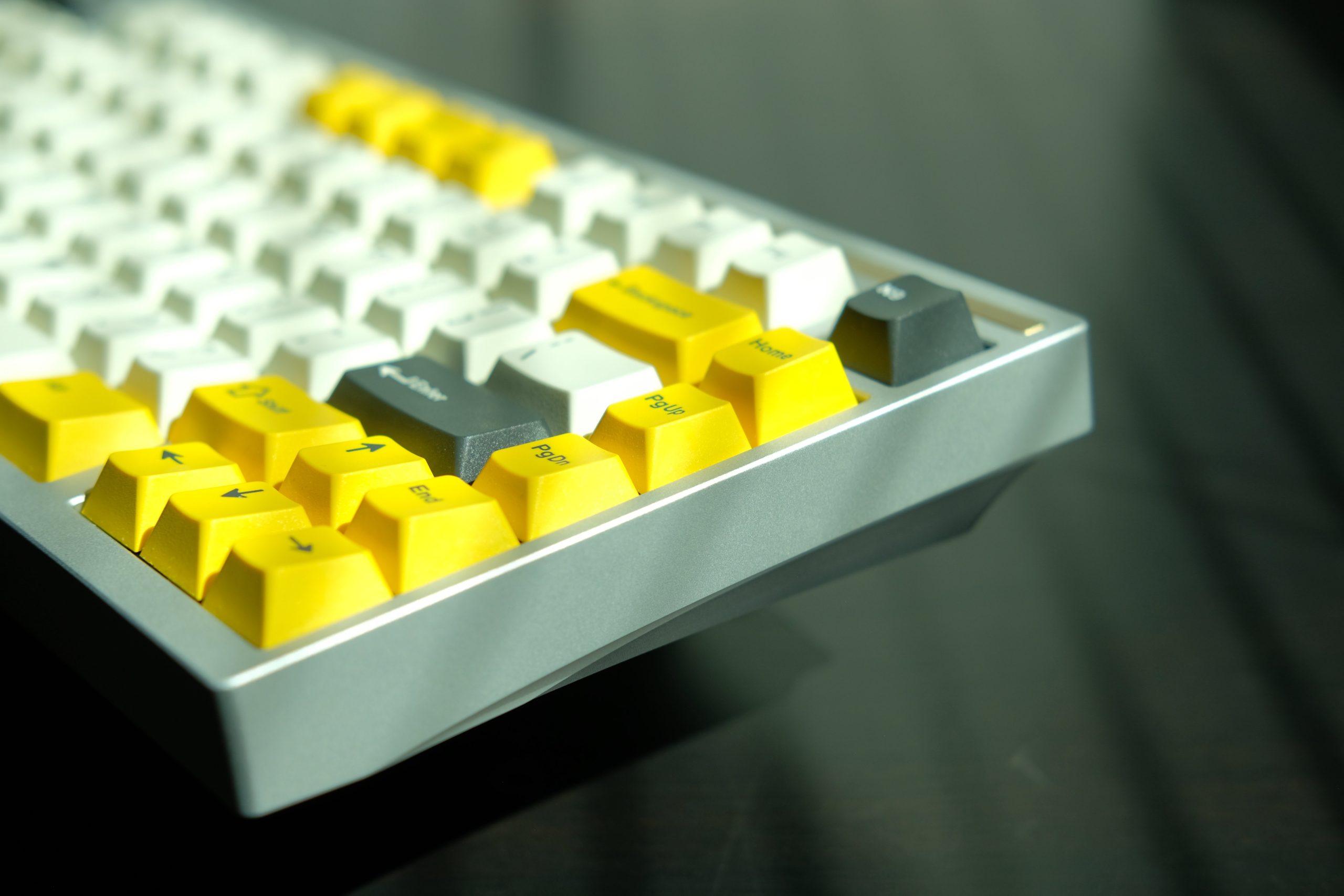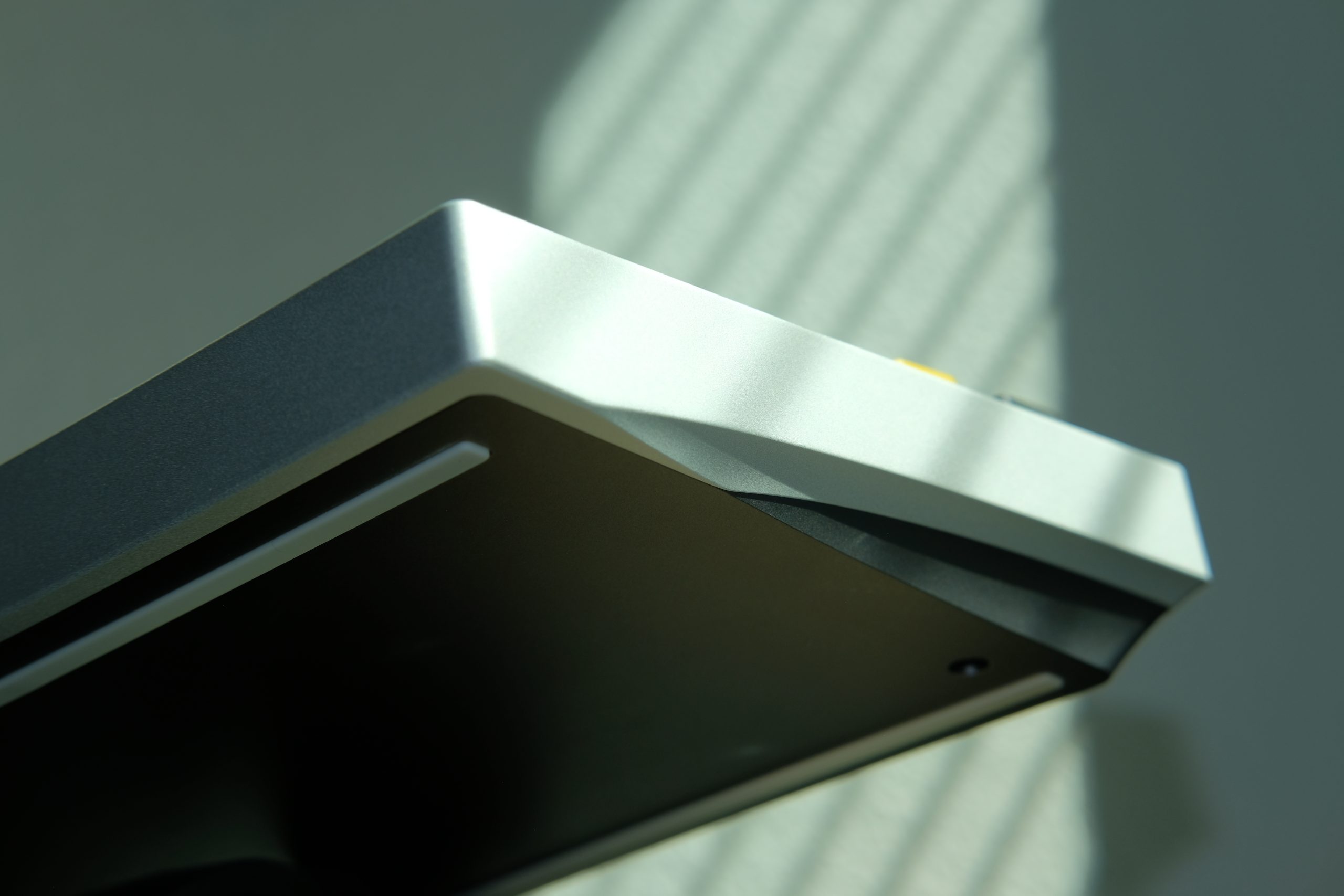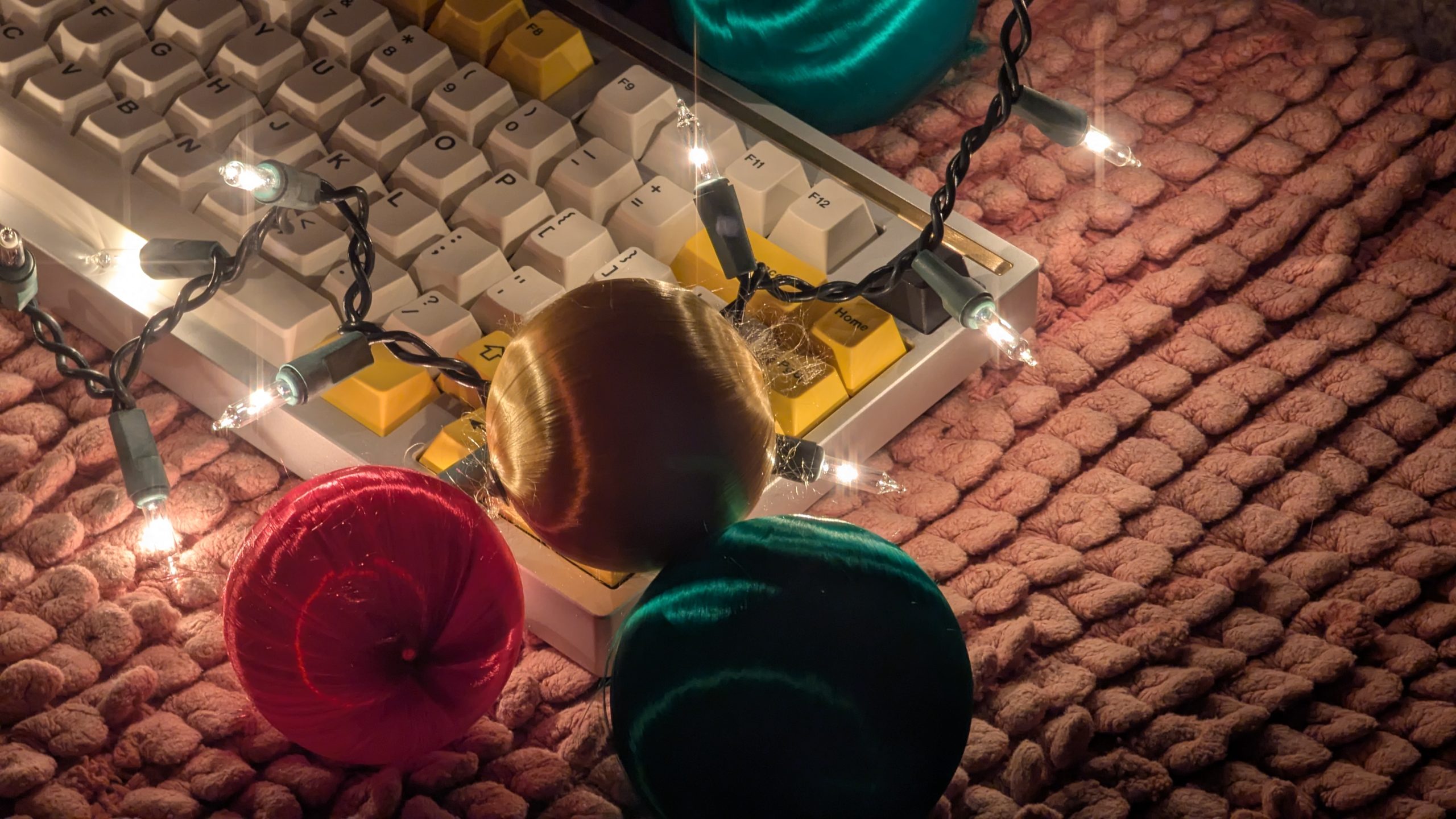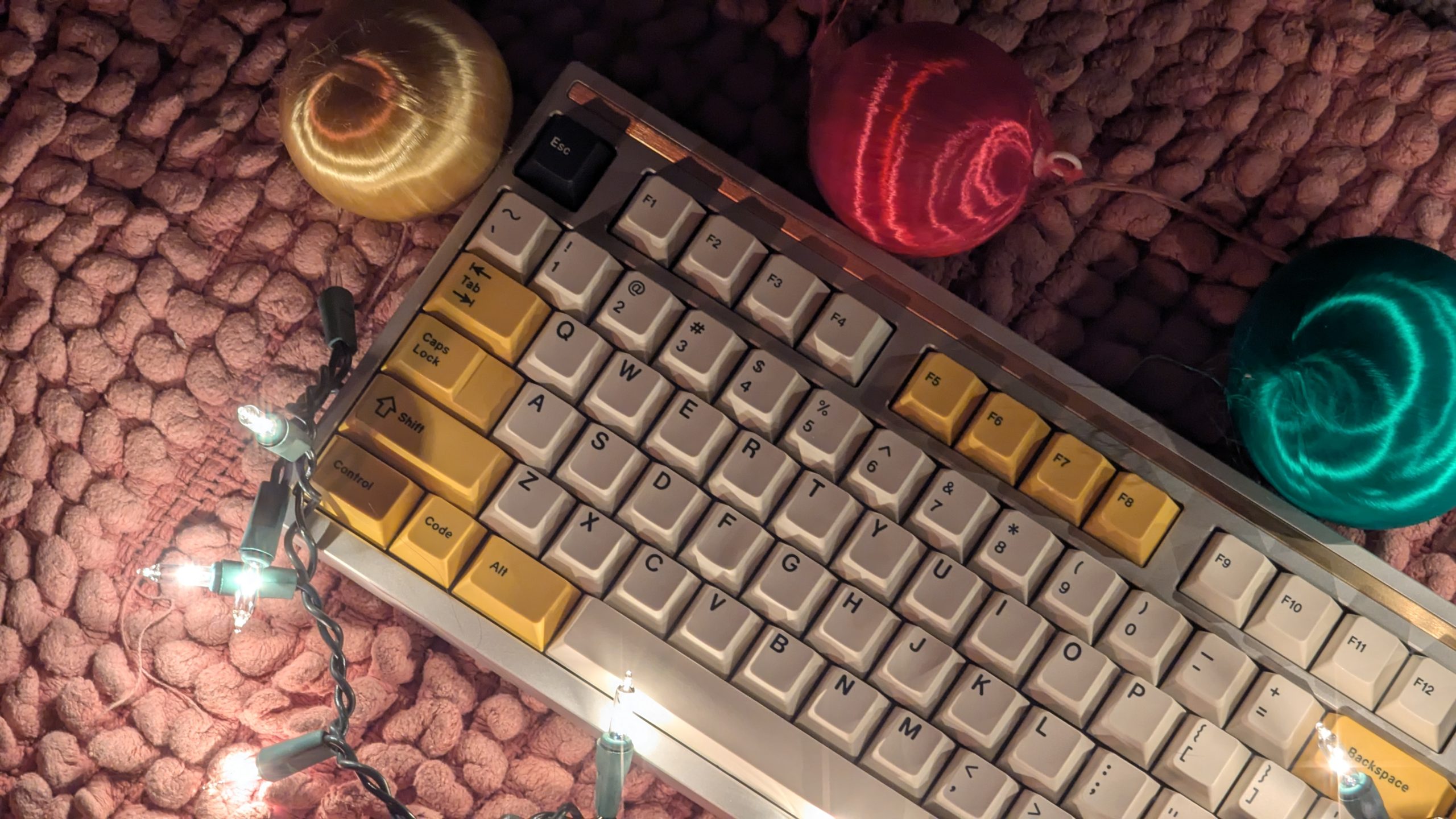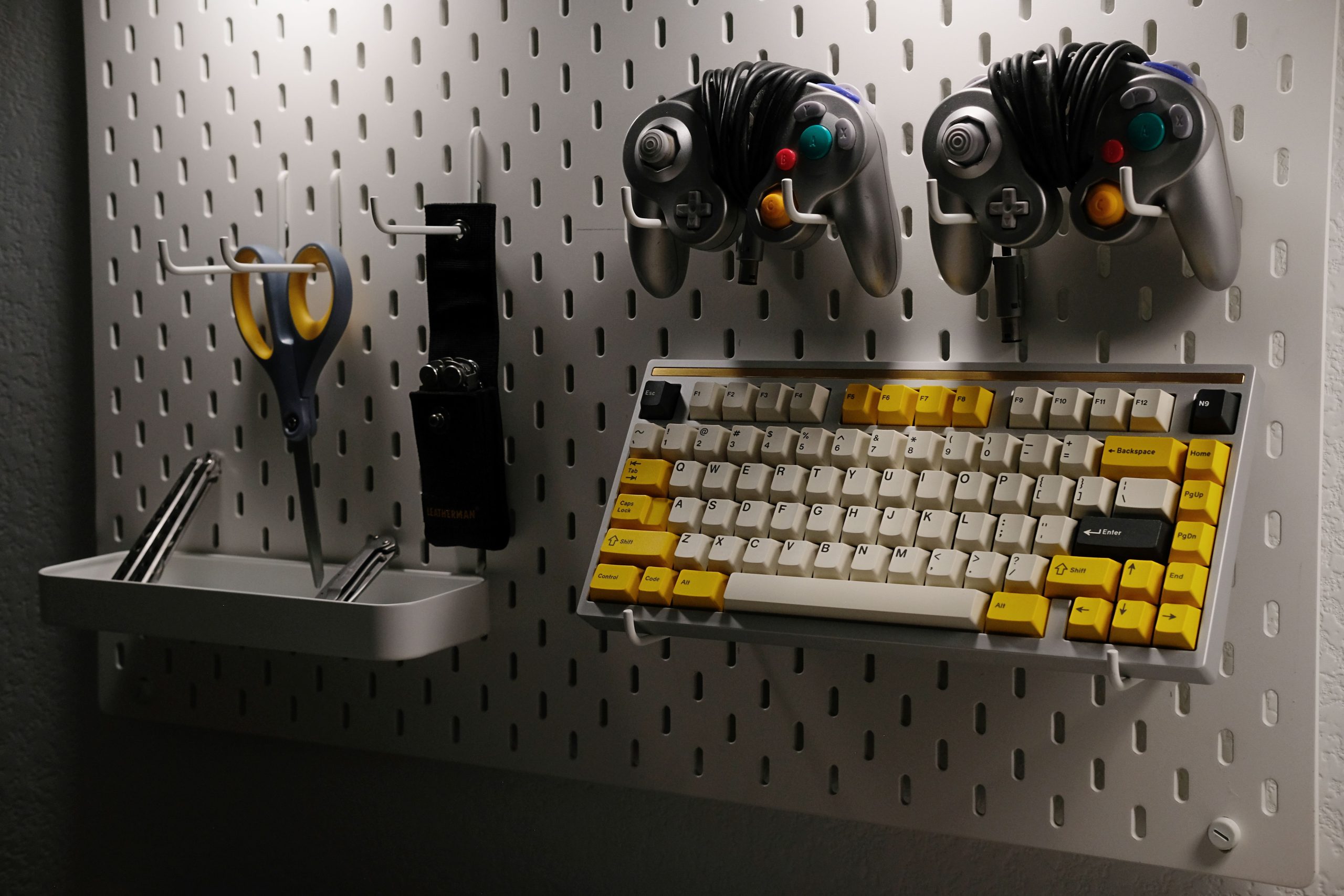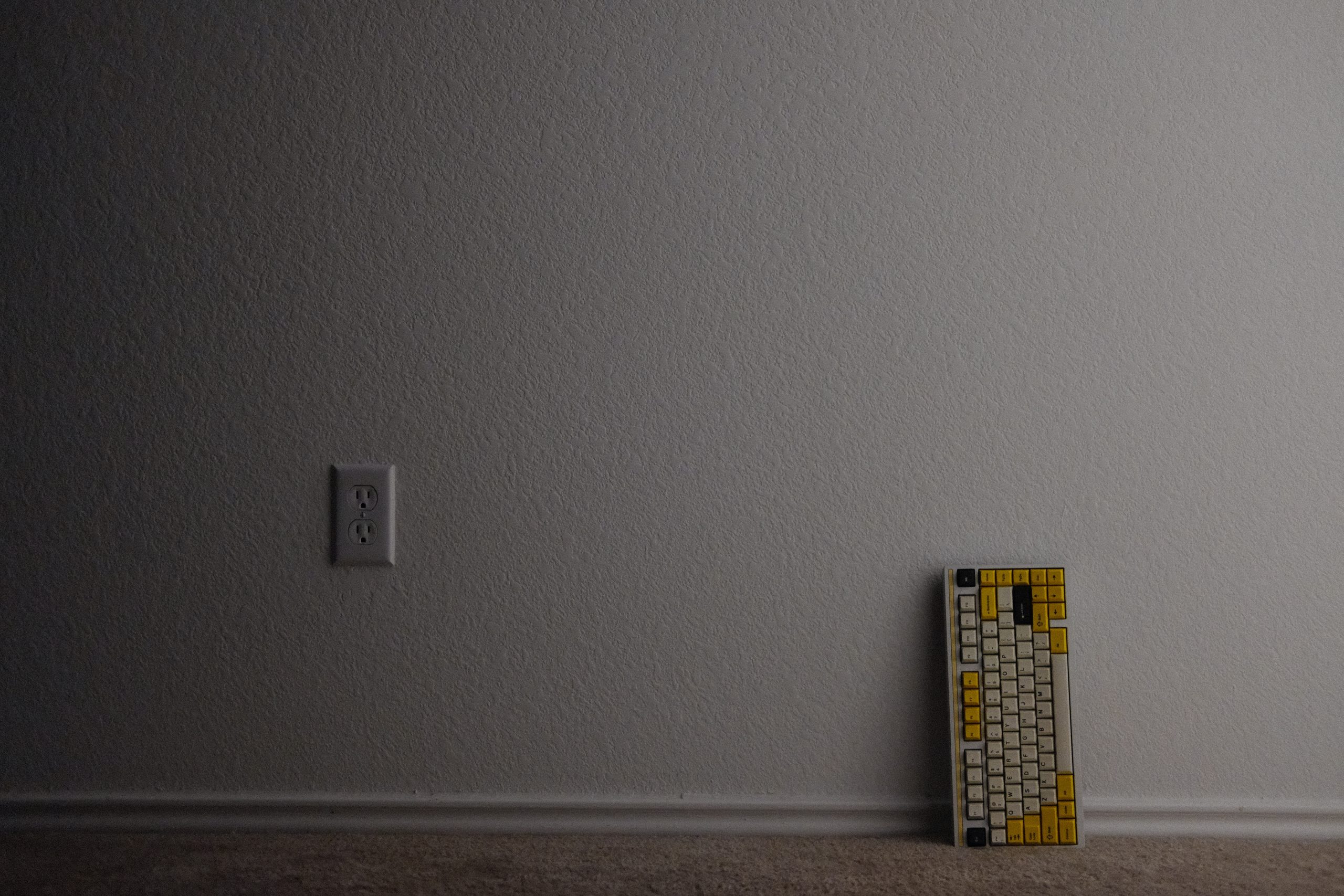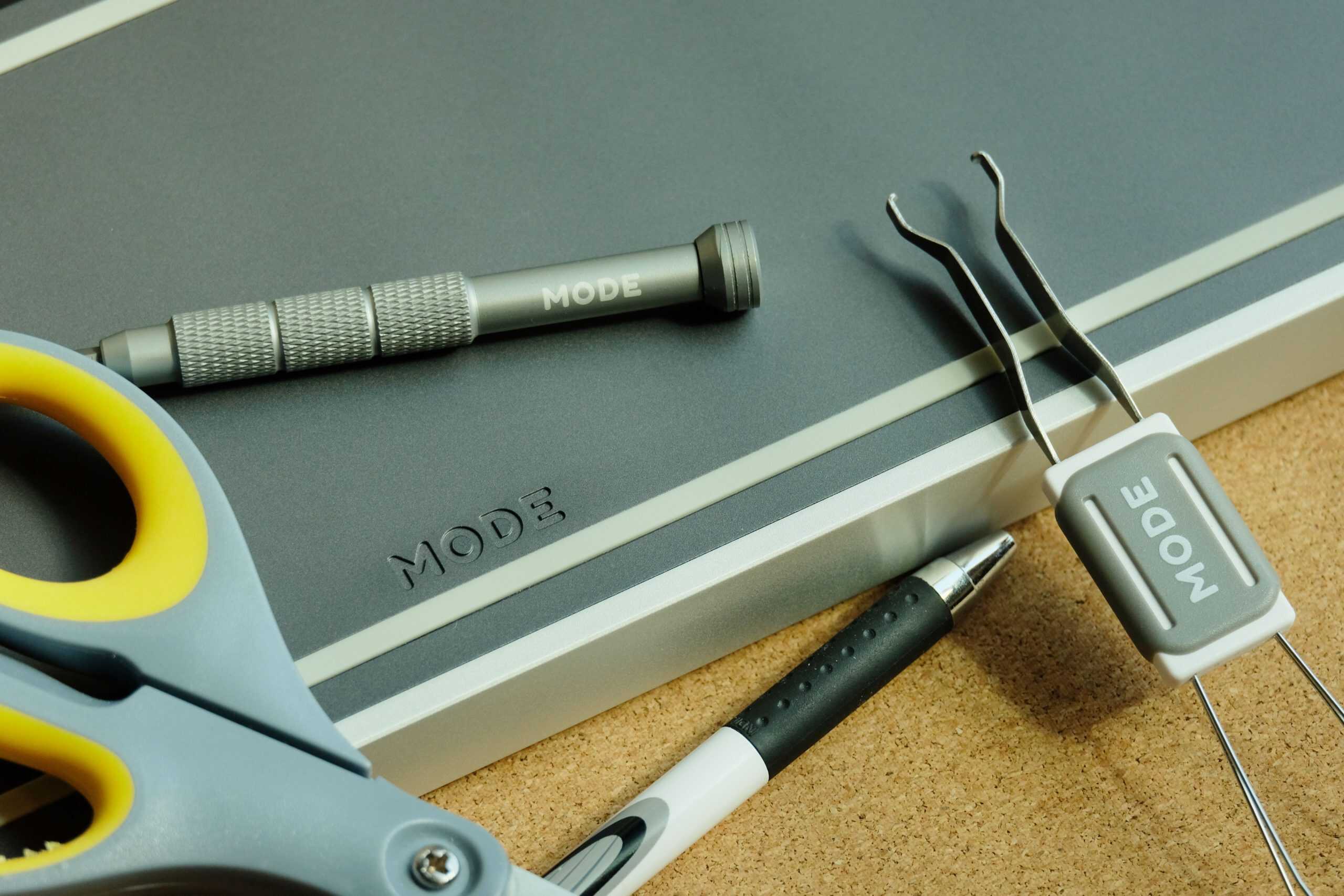Sonnet (2022)
The Mode Sonnet (2022) [i’ll stop with the 2022 for now] is Mode’s third board to make it to the public and in my opinion, easily their best execution in a board over the years, even against its many predecessors. It even got a refresh in 2024 to fix up a couple points (mainly the accent bar to give it more security, I personally didn’t think this was necessary) and to implement their version of gasket mount, the Lattice Mount. Unfortunately I’m not rich enough to get a refresh model so I have the old one which is still a banger. Let’s take a look.
Design/Aesthetics
Like I said, I think the Sonnet is Mode’s best execution, and part of the reason is that it makes the most out of just a few details, allowing for what could be one of the most timeless designs in a keyboard. From above, the 75% design is incredibly simple; the navigation clusters are non-exploded unlike those of the popular GMMK Pro or CannonKeys’ Sat75 layouts, giving it a very condensed yet uniform look, especially with the symmetrical F-Row.
Atop the typing area is a simple accent bar that stripes across the width of the keyboard which can come in a variety of materials, colors, whatever it may be. You can go as basic as a simple white aluminum accent to as flavorful as one of the limited flame-patina brass accents, or as stylish as one of Matthew Encina’s (ModMusings) collaboration white oak accent bars. Regardless of how you go, it perfectly serves its purpose to both break up the design with a small statement piece while also helping frame the board to keep it from looking ginormous with a tall forehead. The only thing I’m surprised to have not seen yet is a custom modelled accent bar that instead implements a proper pen rail, but I digress, maybe that’s going outside of the scope of the design.
Rotating the board to its side yields probably one of the most satisfying side profiles out there. For the top case, the side eventually turns into a large fillet with a large radius on the top edge and a slightly smaller radius on the bottom to give it a “swoopy” taper that increases the size of the fillet towards the front of the case, which eventually terminates about 20mm from the very front of the case. The fillet then meets (almost perfectly) with the bottom case which itself has a very concave profile on that side to make the side of the case almost feel like an entire pocket that feels perfectly finger-shaped. These sides don’t perfectly meet and there is probably a less-than-1mm step going from the bottom case to the top case, but it still makes for a fun side profile to look at and feel.
Assembly
Mode gets a bad rep as the “Apple” of Mechanical Keyboards, with alleged “pretentious, artsy designs” and “brand-name premium price tags,” but if there’s one thing Mode does not share with Apple, it’s the ease of build and tinkering process.
The first version of the Sonnet offers two mounting styles: Two flavors of top mount, the original top mount itself where screws mate the plate to the top case, as well as the so-called isolated top mount which adds a small silicone sleeve over the plate’s mount point to create a small amount of isolation between the screw, plate and case similar to that of a gasket mount. It also features the admittedly underwhelming stack mount which uses a small groove in the top case and a large layer of silicone to stack the PCB assembly inside, which while easy, does very much mute and dampen the sound with no benefit to the typing feel. I wouldn’t recommend the stack mount.
The 2024 refresh also features an improved implementation of their Lattice Mount that originates from their Mode Envoy. This one I don’t have experience with as I don’t have a compatible case, but I have heard sound tests and accounts that it does live up to expectations.
Once the PCB assembly is constructed to your desire, the Sonnet only needs to be slightly awkwardly clam-shelled from the bottom because of the aforementioned groove in the top case, and two longer, slightly thicker (probably M2.5?) screws somehow hold everything in place tightly with no concern of the board collapsing on itself.
PCB and Firmware
The Mode Sonnet comes with a 1.6mm FR4 PCB with Via-ready QMK pre-flashed onto it. The PCB comes in the typical two flavors of hotswap or solder, with solder as usual offering more layout options including ISO. The hotswap PCB is left missing ISO as usual, but strangely also split backspace which, while I do prefer the workflow of a split backspace, is not a deal-breaker on a bigger board like a 75% or a TKL. Another odd discrepancy between the two is that the solder PCB has two large flex cuts, one spanning just over 11u and the bottom over 10u, while the hotswap PCB is absent of any cuts. My only assumption for this decision is to focus on half-plate configurations, but I don’t generally reach for flex cuts on PCBs of any quantity, at most a single cut between R2 and R3 or R3 and R4. The flex cuts and lack of split-backspace aren’t sacreligious decisions by any means, but they are curious decisions regardless.
Typing Experience
The Sonnet delivers a pretty average top mount experience compared to most boards. Aluminum plate like always is not a great way to go with top mount for a combination of the additional resonance and thudding noises added from case contact (even with the isolation sleeve, though it does tame it slightly), but a plastic plate like Polycarbonate or Polypropylene or even a Carbon Fiber plate would shine best in a mount like this to keep the sound bright and full while also avoiding the pitfalls of top mount in terms of stiffness (unless you use Carbon Fiber) and the usually much more prevalent bassy note. If the looks of the Sonnet kill, then the sound of the Sonnet maims.
| Sonnet (2022) |
|---|
 |
| Case Material • CNC Aluminum • CNC Brass (Accent Bar) • CNC Copper (Internal Weight) |
| Plate • Aluminum • Polypropylene |
| Mount • Top Mount • Isolated Top Mount • Stack Mount |
| Included Parts • Rigid felt-interior Carry Case and Microfiber Cloth • Custom Mode Combination Keycap/Switch Puller • Custom Mode Screwdriver and Bits |
| Cost • $271.50 (sale, normal ~$507!) |
| Release Date • 2022 |
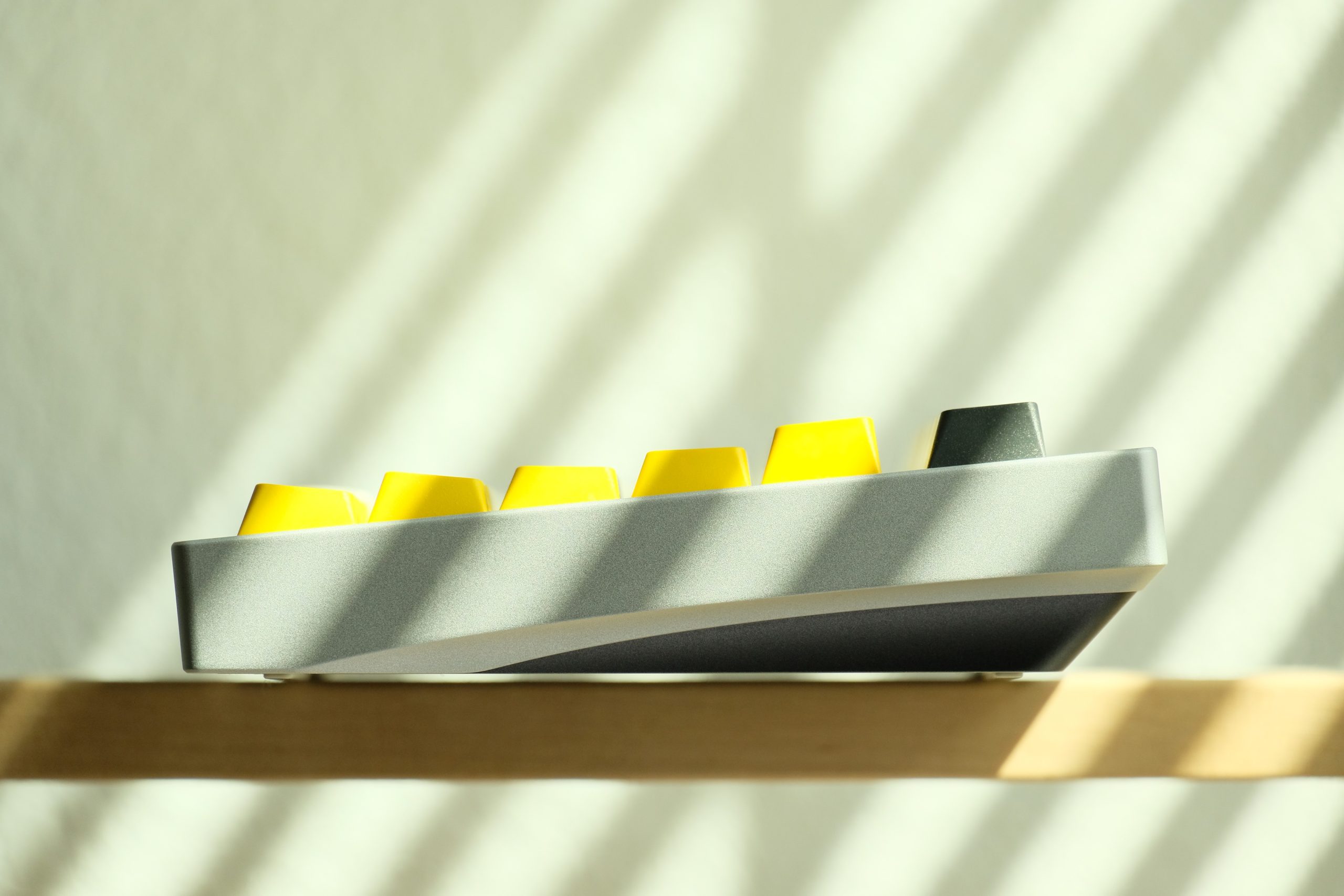
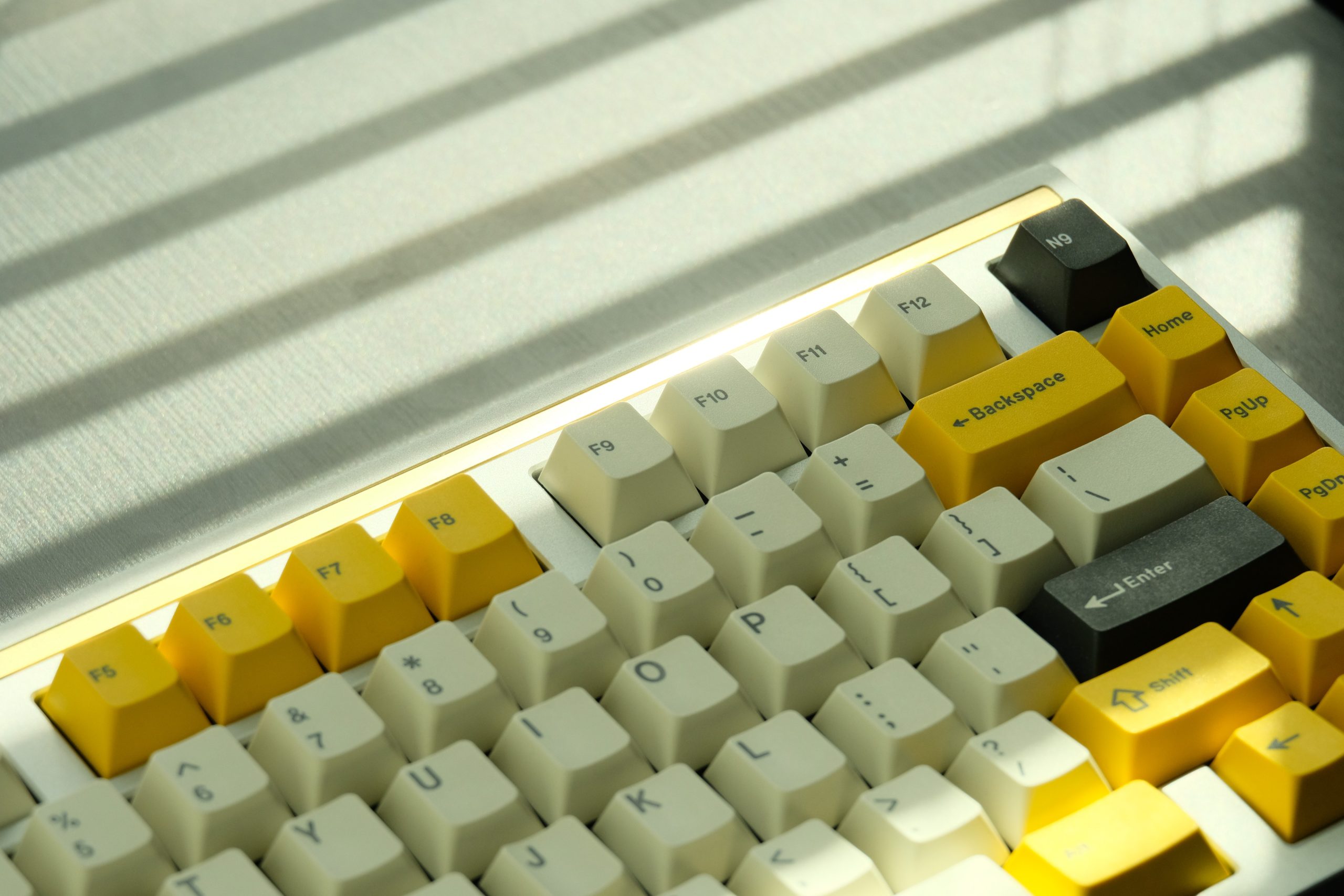

Overview
Like I said towards the beginning, the Sonnet is slated to be a timeless board within the customs scene with its simple yet effective design, and a comparably effective sound profile. For the sale price I got as a result of BFCM including a full damn copper weight, I couldn’t be more thrilled with my purchase. At the more reasonably anticipated price of $450-$500? I can’t say for sure, but if you are on the fence, just know that Sonnets, especially the 2022 V1, do sell for decently lower secondhand if you can stomach buying from online strangers, and if you do have to brace the full price of getting something brand new, you can also sit comfortably knowing that Mode offers great customer support and will treat you well (I didn’t even order a case, I just ordered parts and they gave me one plus all the necessary tools!).
Gallery
This article is not sponsored or compensated for in any way. This article falls under Fair Use and adheres to the Copyrights of the mentioned brands. Any mistakes, feedback or clarifications may be directed to askme@cheesemanfuu.com.
